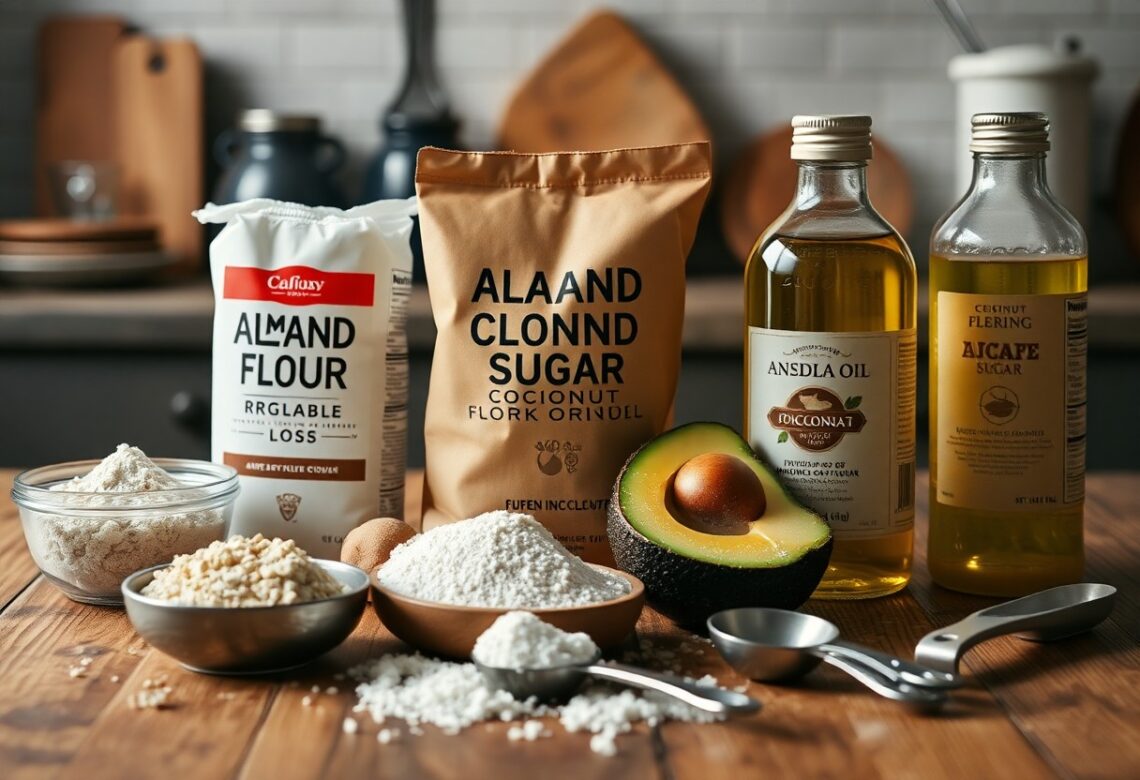Over the years, many have discovered that baking can be both delicious and healthier with the right adjustments. In this comprehensive guide, you’ll uncover weight-friendly alternatives that allow you to enjoy your favorite treats without compromising your health goals. From substituting traditional flours to utilizing natural sweeteners, this guide equips you with practical tips and ingredients that will transform your baking experience. Let’s dive in and start creating guilt-free delights that satisfy your cravings while being mindful of your wellness journey.
Key Takeaways:
- Substitutes: Explore various baking substitutes that can lower calorie counts while maintaining flavor.
- Flour Alternatives: Utilize almond flour or whole wheat flour for healthier, lower-carb options.
- Sweeteners: Consider using stevia or erythritol as sugar alternatives to reduce sugar intake.
- Fats: Replace traditional fats with unsweetened applesauce or Greek yogurt to cut calories and enhance moisture.
- Portion Control: Pay attention to portion sizes to help manage overall calorie consumption in baked goods.
- Flavor Enhancers: Incorporate spices and extracts to boost flavor without adding extra calories.
- Test and Adapt: Experiment with different recipes to find the most satisfying alternatives that fit your taste and health goals.
Understanding Weight-Friendly Baking Alternatives
The world of weight-friendly baking alternatives offers various options that allow you to enjoy your favorite treats without the added calories. By incorporating these substitutes, you can create delicious baked goods that align with your dietary goals. It’s crucial to understand the characteristics and functionalities of these alternatives to achieve the best results in your recipes.
Types of Weight-Friendly Flour Substitutes
Now, you can explore several flour alternatives that are lower in calories and carbohydrates. Each option brings distinct flavors and textures to your baked goods:
| Flour Substitute | Benefits |
|---|---|
| Almond Flour | High in protein and healthy fats. |
| Coconut Flour | Low in carbohydrates and high in fiber. |
| Oat Flour | Provides a chewy texture with heart-healthy benefits. |
| Chickpea Flour | Rich in protein and has a nutty flavor. |
| Cauliflower Flour | Low-carb option for various gluten-free recipes. |
This variety allows you to mix and match different flours to achieve unique flavors and textures in your baking.
Low-Calorie Sweeteners: Options and Uses
Even when you want to cut back on sugar, numerous low-calorie sweeteners can satisfy your sweet tooth without guilt. These options can be used to enhance the flavor of your baked goods without contributing significantly to your caloric intake.
This section explores various low-calorie sweeteners available in the market, such as stevia, erythritol, and monk fruit extract. Each of these alternatives can replace refined sugar in your recipes seamlessly, helping you enjoy baked delights while maintaining your dietary needs. You’ll find that experimenting with these sweeteners can lead to delicious results that don’t compromise on taste or texture.
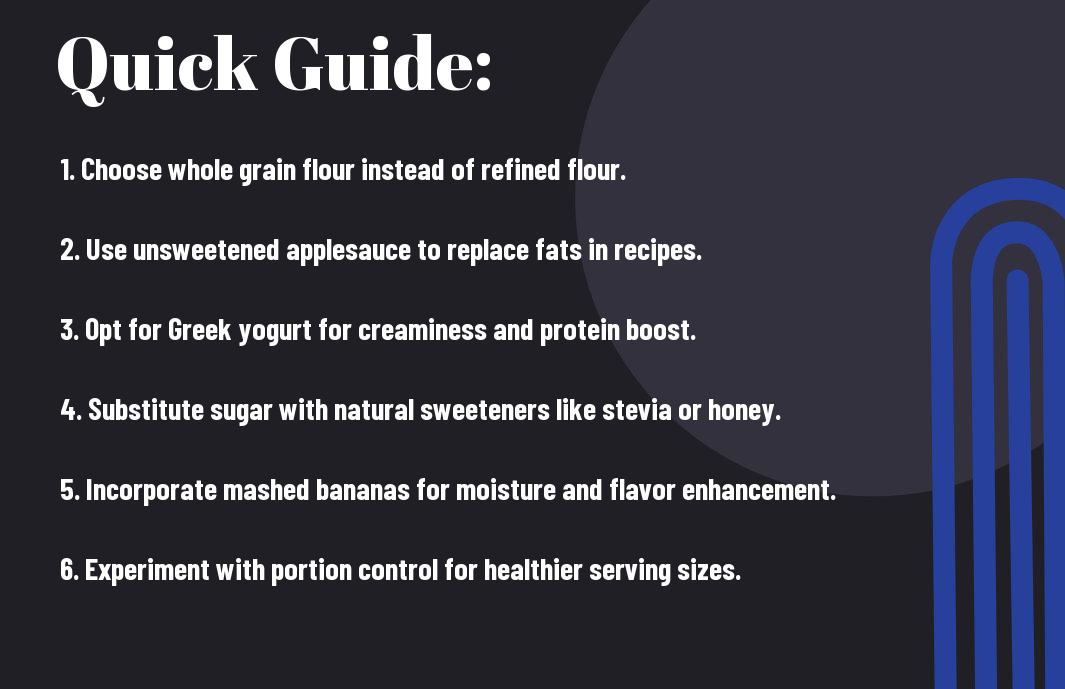
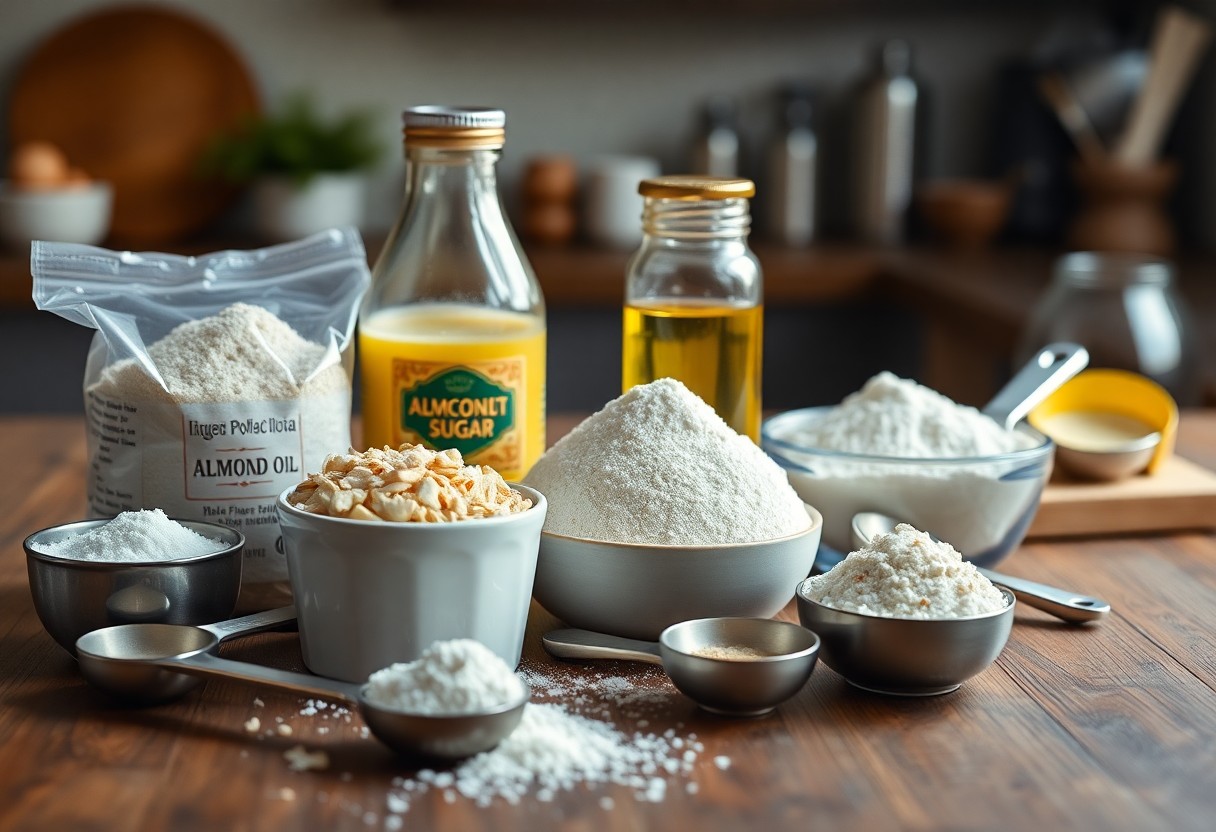
Essential Tips for Baking with Substitutes
Some helpful tips for baking with substitutes can make a significant difference in your outcomes. Consider the following:
- Measure your ingredients accurately to maintain balance.
- Use the right substitutes for the intended purpose, such as applesauce for oil.
- Be patient; some substitutions will require slight adjustments in baking time.
- Adjust your oven temperature when necessary to avoid over or undercooking.
Any specific concerns can be explored further in the article on Healthy Swaps for Baking and Cooking.
Measuring and Mixing Techniques
Assuming you are familiar with standard measuring techniques, it’s important to note that using substitutes may require specific adjustments in your approach. For instance, when using fluid substitutes, like nut milk instead of cow’s milk, ensure proper volume measurements to achieve the right consistency. Additionally, if you are replacing an egg, consider how the texture may change during mixing, and adjust your mixing time accordingly.
Flavor Enhancement Techniques
Assuming you want to enhance flavors in your baked goods, exploring various techniques can lead to delightful results. Substitutes may shift the flavor profile slightly, so using ingredients like spices, extracts, or natural sweeteners can elevate your bakes. You can incorporate zest, vanilla extract, or even a dash of sea salt to amplify the natural flavors of your ingredients.
Techniques for flavor enhancement include experimenting with spices like cinnamon or nutmeg, which can add warmth and richness. You can also use vanilla or almond extract for depth and complexity. Consider incorporating citrus zest for brightness or sea salt to elevate sweetness. By thoughtfully combining these elements, your baking can remain enjoyable and satisfying even with healthier substitutes.
Step-by-Step Guide to Baking with Alternatives
For your baking journey using alternatives, follow this easy guide. Each ingredient swap can enhance your baked goods while being mindful of your dietary preferences. Use the table below to familiarize yourself with these alternatives:
Ingredient Swaps
| Traditional Ingredient | Weight-Friendly Alternative |
|---|---|
| Butter | Unsweetened applesauce or Greek yogurt |
| Sugar | Stevia or monk fruit sweetener |
| All-purpose flour | Almond flour or whole wheat flour |
| Eggs | Flaxseed meal or chia seeds |
Basic Weight-Friendly Recipes
Alternatives can transform traditional recipes into healthier options. Start with simple recipes like banana bread, oatmeal cookies, or muffins, substituting classic ingredients with those listed above. Doing so allows you to maintain flavor while reducing calories and fat without sacrificing texture.
Troubleshooting Common Issues
Issues may arise when baking with alternatives, such as changes in texture or flavor. Keep an eye on your baked goods, as they might require different baking times or temperatures, affecting the final outcome. Adjustments and proper measurements will help you achieve the desired consistency and taste.
Guide yourself through troubleshooting by experimenting with small batches. If your cake comes out too dry, try adding a bit more moisture through applesauce or yogurt. If cookies spread too much, chill the dough before baking, as this can help them hold their shape better. By paying attention to these details, you can refine your recipes for the best results.
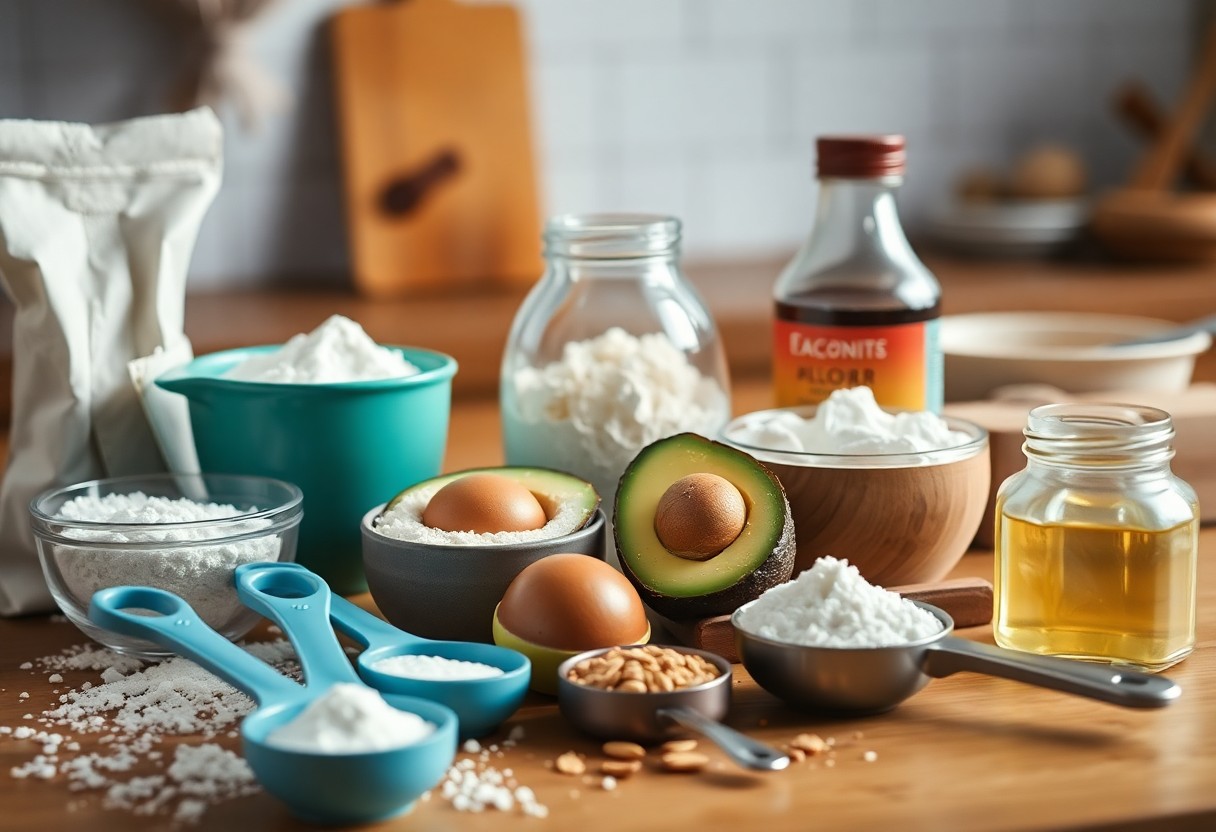
Factors to Consider When Choosing Alternatives
Despite the abundance of baking alternatives available today, selecting the right options for your recipes requires thoughtful consideration. Here are some factors to keep in mind:
- Your personal dietary goals
- Allergies and intolerances
- The specific recipe requirements
- Texture and flavor preferences
Perceiving these factors will help you make informed choices that suit your needs and enhance your baking experience.
Dietary Restrictions and Allergies
Choosing baking alternatives that align with your dietary restrictions and allergies is important for your health and enjoyment. Many traditional baking ingredients may not work for everyone, especially those with gluten intolerance, dairy allergies, or nut sensitivities. By understanding safe substitutes, you can create delicious baked goods without compromising your dietary needs.
Nutritional Values and Benefits
Even when you are focused on taste, it’s important to consider the nutritional values and benefits of your baking alternatives. Swapping out sugar for natural sweeteners or using whole grains instead of refined flour can significantly improve the health profile of your baked goods. Each alternative can contribute various vitamins, minerals, and antioxidants that reinforce a balanced diet.
Allergies and intolerances can limit the ingredients you use, but many alternatives not only fit within these constraints but also boost the nutritional value of your treats. For example, using almond flour provides healthy fats, while flaxseed meal adds fiber and omega-3 fatty acids. Opting for alternatives allows you to create delicious, guilt-free desserts, elevating the nutritional content without sacrificing flavor or enjoyment.
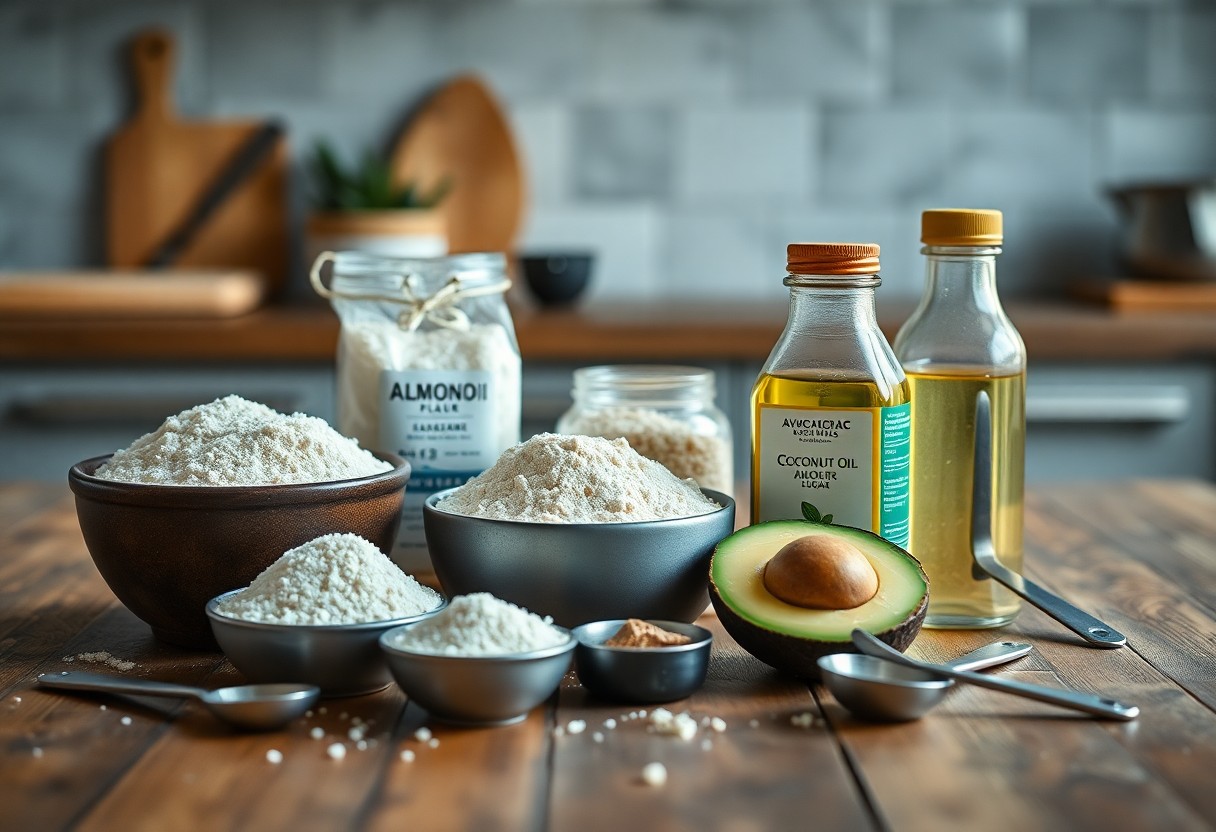
Pros and Cons of Weight-Friendly Ingredients
Unlike traditional baking ingredients, weight-friendly alternatives come with their own set of advantages and drawbacks. It’s important to consider both sides when making ingredient substitutions. The table below highlights key pros and cons to help you make informed choices for your baking endeavors.
Pros and Cons of Weight-Friendly Ingredients
| Pros | Cons |
| Lower in calories | May alter texture |
| Increased fiber content | Different flavor profiles |
| Less sugar or fat | Requires more experimentation |
| Potentially healthier nutrients | Shorter shelf life |
| Allergen-friendly options | Availability varies |
| Supports dietary preferences | May not work for all recipes |
| Creative baking opportunities | Can be costlier |
| Can enhance personal health | May require additional ingredients |
For more information on Healthy Baking Alternatives – cns – UC Davis, explore additional resources that provide guidance on making healthier choices in your baking.
Benefits of Using Alternatives
Clearly, using weight-friendly baking alternatives often leads to healthier treats without sacrificing flavor. As you experiment with these ingredients, you might find new favorites that fit better with your dietary goals. Not only can you indulge in your baked goods, but you can also make choices that align with a balanced lifestyle!
Potential Downsides to Consider
Alternatives can sometimes come with trade-offs that may affect your overall experience. Adjustments in texture and flavor may require re-evaluating your preferences. While you might enjoy the health benefits, certain substitutes may lead to unexpected outcomes in your baking results.
Consider how the new ingredients may interact with your existing favorite recipes. For instance, if you choose a sugar substitute, it may not caramelize as well as traditional sugar, leading to a different texture. Additionally, some alternatives require specific ratios to achieve the desired taste and consistency, so it may take more time to perfect your recipes. Take note of your experiences to better understand which alternatives work best for you and your baking style.
Final Words
As a reminder, by exploring weight-friendly baking alternatives, you can enjoy delicious treats without compromising your health goals. You have the power to make smart ingredient choices that align with your dietary needs while still satisfying your cravings. Embrace these alternatives in your kitchen to not only lighten up your baked goods but also improve your overall wellbeing. With this guide, you’re equipped to start your journey towards healthier baking today!
Weight-Friendly Baking Alternatives Guide – FAQ
Q: What are some common weight-friendly baking alternatives for flour?
A: Instead of traditional all-purpose flour, you can use whole wheat flour, almond flour, or coconut flour. Each option comes with different nutritional benefits; for instance, almond flour is lower in carbohydrates and high in healthy fats, while whole wheat flour offers more fiber and protein.
Q: Can I replace sugar in my baking recipes?
A: Yes, you can use several substitutes for sugar such as stevia, erythritol, or monk fruit sweetener. These alternatives are lower in calories and have minimal impact on blood sugar levels, making them popular choices for weight-friendly baking.
Q: What are some healthier options for fats in baking?
A: Instead of butter or margarine, consider using applesauce, Greek yogurt, or coconut oil as healthier fat alternatives. Applesauce can help keep baked goods moist, while Greek yogurt can add protein and reduce calories.
Q: How can I make my baked goods more nutritious without sacrificing taste?
A: Try adding ingredients like oats, ground flaxseed, or chia seeds to your recipes. These not only boost fiber content but also enhance the overall texture and taste of your baked items. Additionally, incorporating fruits or pureed vegetables can increase nutrition without extra calories.
Q: Are there any alternatives for eggs in baking?
A: Yes, you can use several egg substitutes such as unsweetened applesauce (1/4 cup per egg), mashed bananas (1/4 cup per egg), or a flaxseed mixture (1 tablespoon of ground flaxseed mixed with 2.5 tablespoons of water per egg). These alternatives work well in most recipes and add moisture.
Q: What is a good alternative to traditional dairy products in baking?
A: Plant-based milks, such as almond milk or oat milk, serve as excellent dairy substitutes. For creamy textures, try using unsweetened yogurt made from almond or coconut milk. These alternatives typically have fewer calories and can cater to lactose-intolerant individuals.
Q: Can I still enjoy desserts while following a weight-friendly baking approach?
A: Absolutely! By utilizing healthier alternatives like the ones mentioned above, you can create delicious, guilt-free desserts. Focus on portion sizes and balance out your treats with nutritious ingredients to enjoy desserts as part of a well-rounded diet.
